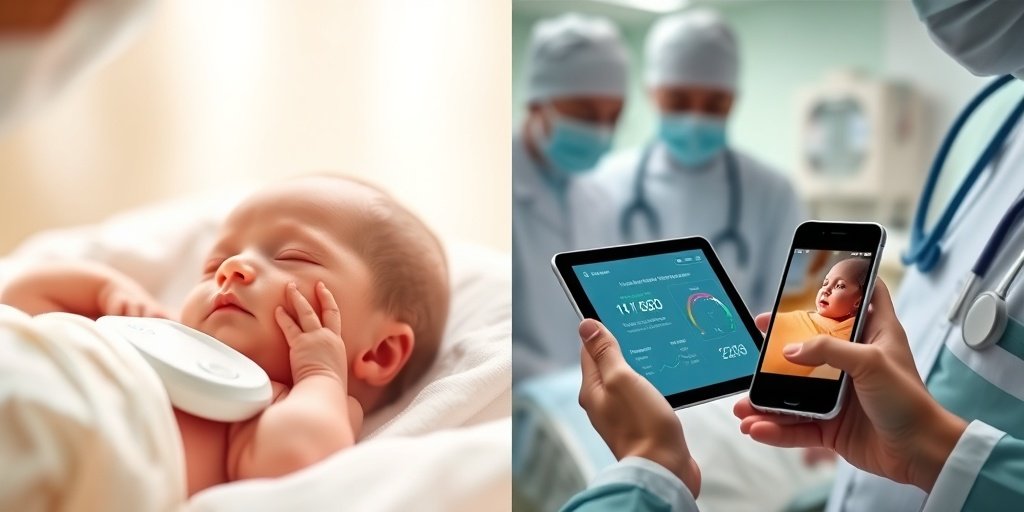⚡ Quick Summary
This review explores the use of artificial intelligence (AI) in non-invasive methods for detecting neonatal jaundice, a condition that poses significant health risks to newborns. AI-driven techniques, particularly Machine Learning (ML) and Deep Learning (DL), have shown an impressive accuracy rate of over 90% in diagnosing jaundice compared to traditional methods.
🔍 Key Details
- 📊 Focus: Non-invasive detection of neonatal jaundice
- 🧩 Techniques: AI-driven methods including ML and DL
- 🏆 Accuracy: Over 90% compared to traditional Total Serum Bilirubin (TSB) testing
- 📱 Applications: Mobile-based solutions using smartphone cameras
- 🌍 Context: Particularly beneficial in low and middle-income countries
🔑 Key Takeaways
- 💡 AI technologies are revolutionizing the early detection of neonatal jaundice.
- 🤖 Machine Learning and Deep Learning enhance diagnostic accuracy by analyzing skin color and other features.
- 🏥 Non-invasive methods reduce discomfort and infection risks associated with traditional testing.
- 📱 Mobile applications provide practical solutions for resource-constrained settings.
- 🌍 Potential impact on reducing neonatal morbidity and mortality rates.
- 🔍 Ethical considerations and practical implications of AI integration in clinical practice are crucial.
- 🔮 Future research should focus on new imaging technologies and wearable sensors for real-time monitoring.

📚 Background
Neonatal jaundice is a prevalent condition that can lead to serious health complications if not detected and treated promptly. Traditional diagnostic methods, such as Total Serum Bilirubin (TSB) testing, are invasive and can cause discomfort to newborns. This has led to a growing interest in developing non-invasive techniques that can provide timely and accurate diagnoses, particularly in low and middle-income countries where healthcare resources may be limited.
🗒️ Study
The review presents a comprehensive analysis of various non-invasive methods for detecting neonatal jaundice, emphasizing the role of AI technologies. By evaluating complex patterns in neonatal skin color and other relevant features, AI models, particularly those utilizing neural networks, have demonstrated significant improvements in diagnostic accuracy. The study highlights the effectiveness of mobile applications that leverage smartphone cameras to estimate bilirubin levels, making them accessible for use in field settings.
📈 Results
The findings indicate that AI models can achieve an accuracy rate exceeding 90% when detecting jaundice, significantly outperforming traditional methods. Mobile-based applications have also shown satisfactory outcomes in real-world settings, providing a practical alternative for healthcare providers in resource-limited environments. These results underscore the potential of AI-driven solutions to transform neonatal care by facilitating early diagnosis and intervention.
🌍 Impact and Implications
The integration of AI-based solutions in neonatal jaundice detection could have profound implications for public health, particularly in regions with high neonatal morbidity and mortality rates. By enabling earlier and more accurate diagnoses, these technologies can help reduce the burden of jaundice-related complications. However, it is essential to address the ethical and practical challenges associated with implementing these technologies in clinical practice to ensure their successful adoption.
🔮 Conclusion
This review highlights the transformative potential of artificial intelligence in the early detection of neonatal jaundice. By utilizing non-invasive methods, healthcare professionals can improve diagnostic accuracy and patient outcomes. The future of neonatal care looks promising with the continued development of AI technologies, and further research is encouraged to explore new imaging techniques and wearable sensors for real-time bilirubin monitoring.
💬 Your comments
What are your thoughts on the use of AI in neonatal jaundice detection? We would love to hear your insights! 💬 Share your comments below or connect with us on social media:
Artificial Intelligence non-invasive methods for neonatal jaundice detection: A review.
Abstract
Neonatal jaundice is a common and potentially fatal health condition in neonates, especially in low and middle income countries, where it contributes considerably to neonatal morbidity and death. Traditional diagnostic approaches, such as Total Serum Bilirubin (TSB) testing, are invasive and could lead to discomfort, infection risk, and diagnostic delays. As a result, there is a rising interest in non-invasive approaches for detecting jaundice early and accurately. An in-depth analysis of non-invasive techniques for detecting neonatal jaundice is presented by this review, exploring several AI-driven techniques, such as Machine Learning (ML) and Deep Learning (DL), which have demonstrated the ability to enhance diagnostic accuracy by evaluating complex patterns in neonatal skin color and other relevant features. It is identified that AI models incorporating variants of neural networks achieve an accuracy rate of over 90% in detecting jaundice when compared to traditional methods. Furthermore, satisfactory outcomes in field settings have been demonstrated by mobile-based applications that use smartphone cameras to estimate bilirubin levels, providing a practical alternative for resource-constrained areas. The potential impact of AI-based solutions on reducing neonatal morbidity and mortality is evaluated by this review, with a focus on real-world clinical challenges, highlighting the effectiveness and practicality of AI-based strategies as an assistive tool in revolutionizing neonatal care through early jaundice diagnosis, while also addressing the ethical and practical implications of integrating these technologies in clinical practice. Future research areas, such as the development of new imaging technologies and the incorporation of wearable sensors for real-time bilirubin monitoring, are recommended by the paper.
Author: [‘Salami FO’, ‘Muzammel M’, ‘Mourchid Y’, ‘Othmani A’]
Journal: Artif Intell Med
Citation: Salami FO, et al. Artificial Intelligence non-invasive methods for neonatal jaundice detection: A review. Artificial Intelligence non-invasive methods for neonatal jaundice detection: A review. 2025; (unknown volume):103088. doi: 10.1016/j.artmed.2025.103088